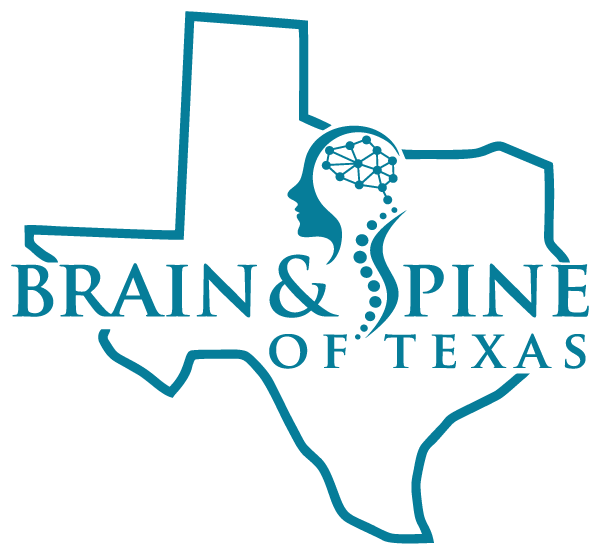Thoracic Discectomy
Effective Treatment for Herniated Discs in the Thoracic Spine
Thoracic discectomy is a surgical procedure used to treat herniated discs in the thoracic spine (the middle section of the back). A herniated disc occurs when the soft inner core of the disc pushes through the outer shell, irritating nearby nerves and causing pain, numbness, or weakness. Thoracic discectomy involves removing the herniated portion of the disc to relieve pressure on the nerves, providing pain relief and restoring normal function. At the Brain and Spine Center of Texas, we specialize in spinal surgery and use the latest techniques to help patients recover from thoracic disc-related conditions.
The goal of thoracic discectomy is to eliminate the disc material that is pressing on the spinal cord or nerve roots, alleviating symptoms such as back pain, radiating pain, and nerve compression. This procedure is typically recommended when conservative treatments like physical therapy, pain management, and rest have not provided relief.
When is Thoracic Discectomy Needed?
Thoracic discectomy is typically performed when a herniated disc in the thoracic spine causes significant pain or nerve damage that is not responding to non-surgical treatments. Common conditions that may require a thoracic discectomy include:
- Herniated Discs – A herniated or bulging disc in the thoracic spine can put pressure on the spinal cord or nerve roots, leading to pain, weakness, or numbness in the back or limbs.
- Spinal Stenosis – Narrowing of the spinal canal due to disc herniation or bone spurs can cause compression of the spinal cord, leading to pain and impaired function.
- Radiculopathy – Nerve compression caused by a herniated disc may lead to radiating pain in the arms, legs, or chest.
If left untreated, a herniated thoracic disc can lead to chronic pain, loss of mobility, and even permanent nerve damage. Thoracic discectomy is designed to remove the disc material that is causing these issues, allowing for improved spinal function.
The Thoracic Discectomy Procedure: What to Expect
Thoracic discectomy is typically performed under general anesthesia and may be done through a traditional open incision or, in some cases, via a minimally invasive approach. Here’s an overview of the procedure:
- Pre-Surgical Evaluation – Detailed imaging such as MRI or CT scans will be used to locate the herniated disc and assess the severity of nerve compression.
- Incision – A small incision is made near the affected disc. Depending on the approach and location of the herniation, the incision may be made through the back, side, or chest.
- Removal of the Disc – The surgeon carefully removes the herniated portion of the disc or, in some cases, the entire disc. This helps to relieve pressure on the spinal cord or nerves.
- Spinal Decompression – Any bone spurs or tissue that may be contributing to nerve compression are also removed during the procedure.
- Closing the Incision – After the disc material is removed and spinal decompression is achieved, the incision is closed, and the patient is monitored as they recover from anesthesia.
Thoracic discectomy is often an outpatient procedure, and many patients can return home the same day or the following day.
Recovery & Post-Surgical Care
After thoracic discectomy, recovery typically involves a period of rest and rehabilitation. Here’s what to expect during the recovery process:
- Pain Management – Post-operative pain and discomfort are common but can be managed with medications prescribed by your surgeon.
- Physical Therapy – Once cleared by your doctor, physical therapy will help you regain strength, mobility, and flexibility in the thoracic spine.
- Activity Restrictions – It’s essential to avoid heavy lifting or strenuous activity during the recovery phase to prevent complications and ensure proper healing.
- Follow-Up Care – Regular follow-up visits will be scheduled to monitor your recovery and ensure proper healing of the spine.
Most patients begin to experience pain relief within the first few weeks, with complete recovery typically taking 6-8 weeks, depending on the individual case.
Why Choose the Brain and Spine Center of Texas?
- Expertise in Spinal Surgery – Our highly skilled surgeons have extensive experience in performing thoracic discectomy procedures and providing the highest level of care.
- Minimally Invasive Techniques – We offer minimally invasive approaches for thoracic discectomy, reducing recovery time and minimizing pain.
- Comprehensive Patient Care – From initial consultation to post-surgical rehabilitation, we offer continuous care throughout your recovery journey.
- Personalized Treatment – We tailor each treatment plan to your individual needs to provide the best possible outcomes and pain relief.
Schedule a consultation
If you’re experiencing pain due to a herniated disc in the thoracic spine, thoracic discectomy may be the solution to alleviate your symptoms and restore function. Contact the Brain and Spine Center of Texas today to schedule a consultation and learn more about this effective treatment option.

